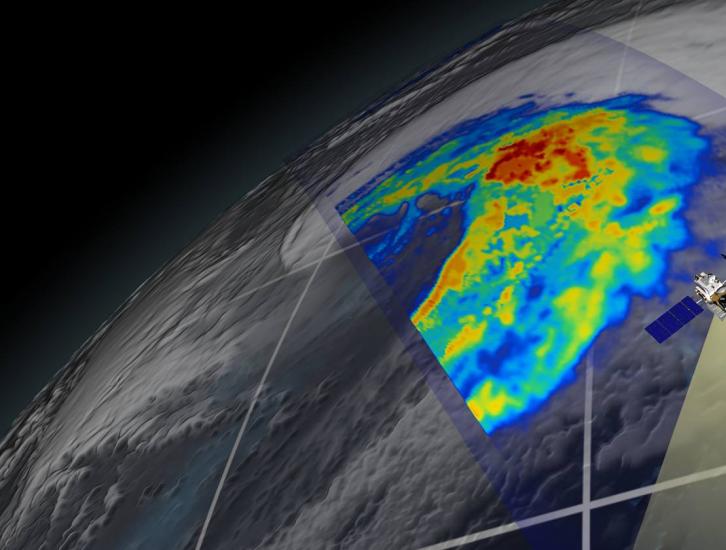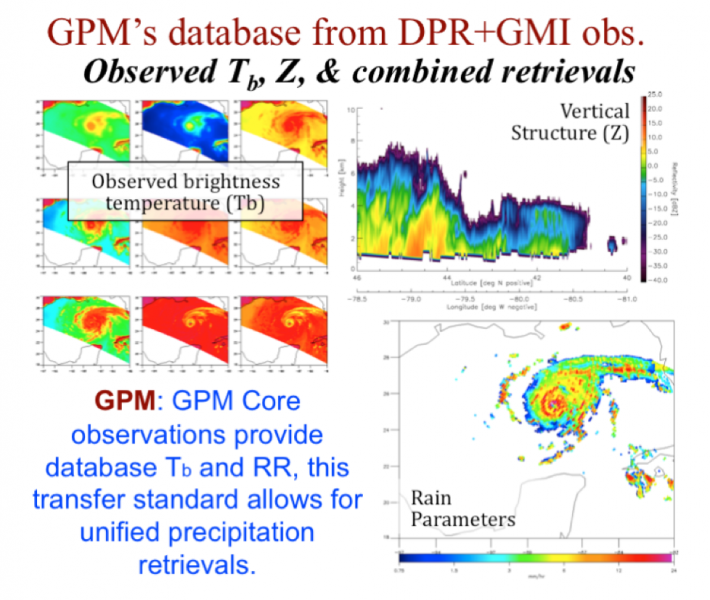
Radiometer Algorithms
Precipitation radiometers provide additional degrees of freedom for interpreting rain and snow in clouds through the use of multiple passive frequencies (9 for TRMM and 13 for GPM). Brightness temperatures at each frequency are a measure of everything in their field of view. These frequencies from the low (10 GHz) end to the high (183 GHz) end transition from being sensitive to liquid rain drops to being sensitive to the snow and ice particles. So, simplifying, when there is liquid rain in the cloud column, the low frequency channels will respond; when there is snow the high frequency channels will respond; when there is clear air the brightness temperatures respond to the surface emission. In lighter rain, the surface emission may contaminate the brightness temperatures such that additional information is needed to constrain precipitation retrievals.
Retrievals from passive sensor measurements typically rely on a priori information, such as that used in Bayesian databases to reduce assumptions. This a priori information of multi-frequency brightness temperatures linked to precipitation profiles can be generated from models of clouds and calculations of brightness temperatures (as was done for TRMM) or from combined active-passive retrievals (as is done for GPM). The retrievals typically perform a best match between the multi-frequency observations and the Bayesian database TBs. For the theoretical and mathematical details of the Radiometer algorithm please review its Algorithm Theoretical Basis Document (ATBD) found at the Precipitation Processing System website.


